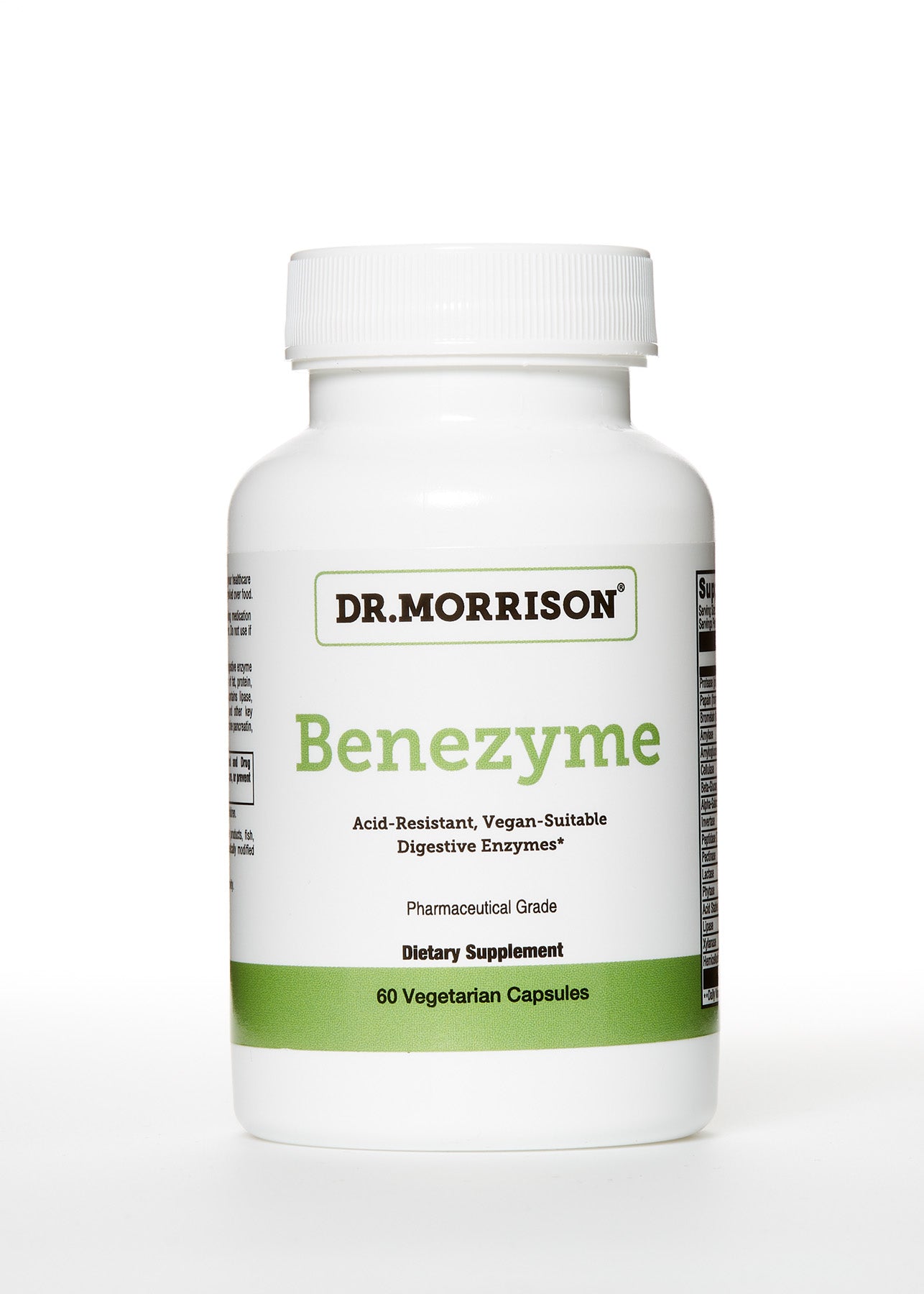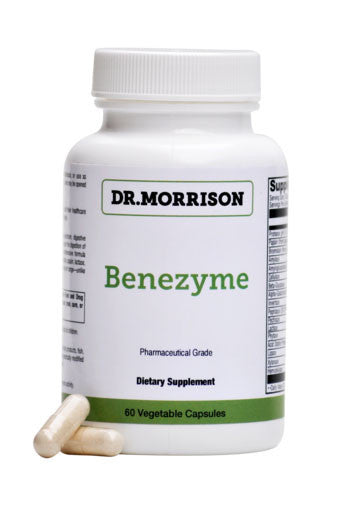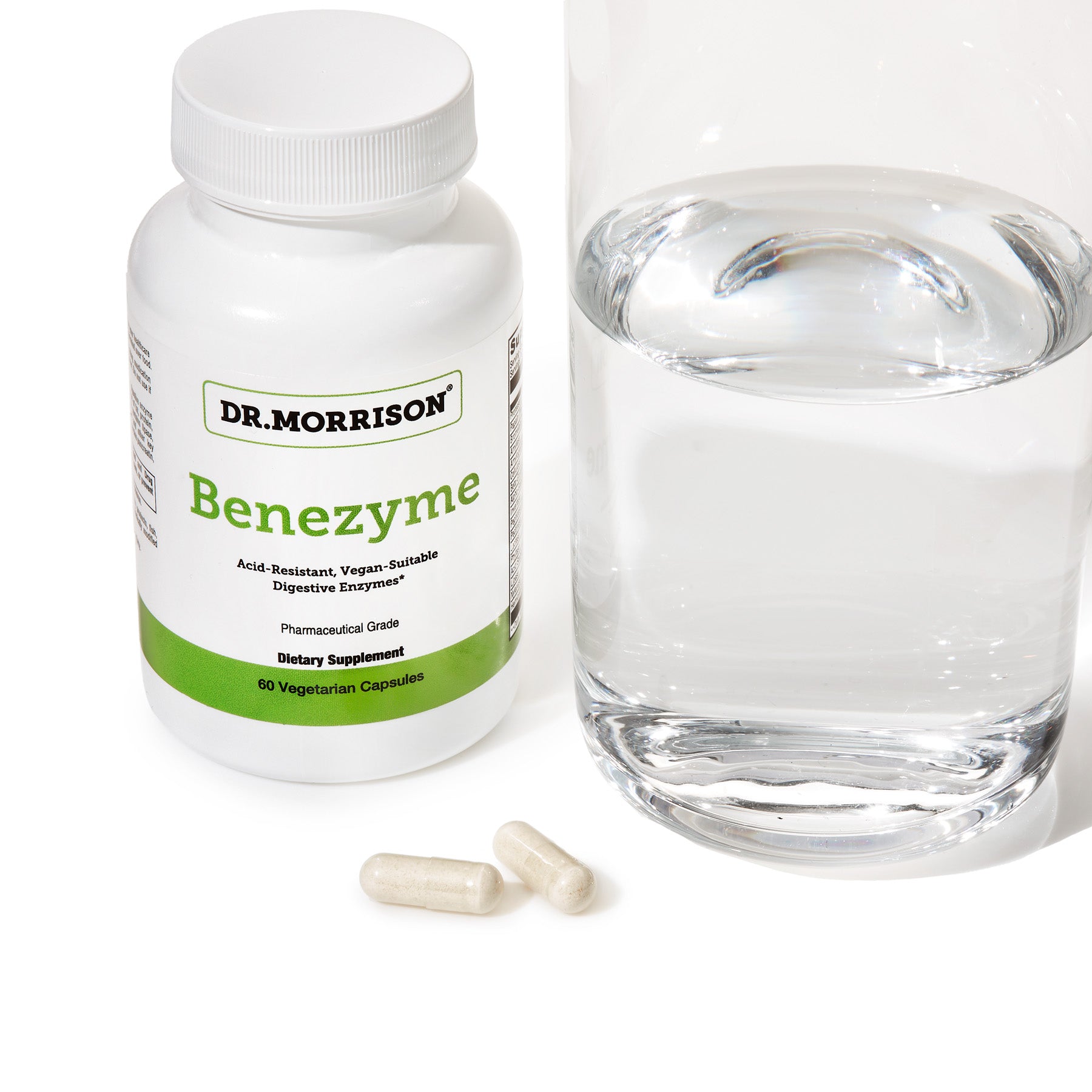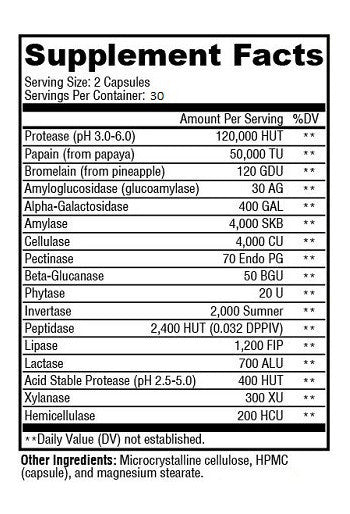Benezyme
$ 32.00
Size: 60 Vegetarian Capsules
Premier Enzyme Blend for Better Digestion and Relief from Gas and Bloating*
Comprehensive Digestive Support for Nutrient Absorption and Gut Balance
Even with a healthy diet, many modern lifestyle factors, like stress, poor gut flora, eating on the go, and aging, can impair digestion and nutrient absorption. Daily Benefit® Benezyme is a comprehensive, plant-based digestive enzyme blend formulated to support optimal digestion of protein, fats, carbohydrates, fiber, and dairy, while promoting gut health and microbial balance.*
Benezyme emphasizes enzymes that support protein breakdown, which naturally declines with age, making it ideal for those looking to improve nutrient absorption, muscle repair, hormone balance, and skin health. It also includes targeted enzymes to break down plant fibers and complex carbohydrates that often cause bloating or gas, helping patients get the most benefit from every meal.*
Key Benefits
- Aids digestion of proteins, carbohydrates, fats, and fibers*
- Supports optimal absorption of vitamins, minerals, and amino acids*
- Breaks down resistant plant fibers to reduce gas and bloating*
- Helps digest legumes and other foods high in polysaccharides*
- Supports lactose digestion for those with dairy sensitivity*
- Inhibits growth of Candida and intestinal parasites*
- Helps break down phytates that interfere with mineral absorption*
- Promotes a healthier gut microbiome by preventing overfeeding of gas-producing bacteria*
*These statements have not been evaluated by the FDA and are not intended to treat or cure any disease.
You’ll Enjoy Daily Benefit® Benezyme if you…
- Struggle with bloating, gas, or indigestion after meals
- Want to optimize nutrient absorption from whole foods
- Have trouble digesting protein, fiber, dairy, or legumes
- Are over age 40 and want to support declining enzyme levels naturally
- Are healing your gut or supporting microbiome balance
Our Patients Love Dr. Morrison’s Daily Benefit® Benezyme Because…
- It’s plant-based and effective across a wide pH range—not disrupted by stomach acid
- Includes enzymes that target Candida and parasites, which are common gut health obstacles
- Offers broad-spectrum support—from protein and fat to fiber and dairy
- It’s well-tolerated, non-porcine, and works quickly
- It provides real relief from discomfort and better digestion with every meal*
*These statements have not been evaluated by the FDA and are not intended to treat or cure any disease.
2 CAPSULES PER SERVING
Protease (pH 3.0-9.0) 120,000 HUT
Papain (from papaya) 50,000 TU
Bromelain (from pineapple) 120 GDU
Amylase 4,000 SKB
Amyloglucosidase (glucoamylase) 30 AG
Cellulase 4,000 CU
Beta-Glucanase 50 BGU
Alpha-Galactosidase 400 GAL
Invertase 2,000 Sumner
Peptidase (29 DPPIV) 2,400 HUT
Pectinase 70 Endo PG
Lactase 700 ALU
Phytase 20 U
Acid Stable Protease (pH 2.0-3.5) 400 HUT
Lipase 1,200 FIP
Xylanase 300 XU
Hemicellulase 200 HCU
Other Ingredients: HPMC (capsule), microcrystalline cellulose, stearic acid, magnesium stearate, and silica.
FORMULATED TO EXCLUDE: Wheat, gluten, yeast, soy, animal or dairy products, fish, shellfish, peanuts, tree nuts, egg, GMOs, artificial colors, or artificial sweeteners.
Take 1-2 capsules daily, or use as directed by your healthcare practitioner. If necessary, capsules may be opened and contents sprinkled over food.
Background: Dietary protein ingestion stimulates muscle protein synthesis by providing amino acids to the muscle. The magnitude and duration of the postprandial increase in muscle protein synthesis rates are largely determined by dietary protein digestion and amino acid absorption kinetics.
Objective: We assessed the impact of protein type, protein dose, and age on dietary protein digestion and amino acid absorption kinetics in vivo in humans.
Methods: We included data from 18 randomized controlled trials with a total of 602 participants [age: 53 ± 23 y; BMI (kg/m2): 24.8 ± 3.3] who consumed various quantities of intrinsically l-[1-13C]-phenylalanine-labeled whey (n = 137), casein (n = 393), or milk (n = 72) protein and received intravenous infusions of l-[ring-2H5]-phenylalanine, which allowed us to assess protein digestion and phenylalanine absorption kinetics and the postprandial release of dietary protein-derived phenylalanine into the circulation. The effect of aging on these processes was assessed in a subset of 82 young (aged 22 ± 3 y) and 83 older (aged 71 ± 5 y) individuals.
Results: A total of 50% ± 14% of dietary protein-derived phenylalanine appeared in the circulation over a 5-h postprandial period. Casein ingestion resulted in a smaller (45% ± 11%), whey protein ingestion in an intermediate (57% ± 10%), and milk protein ingestion in a greater (65% ± 13%) fraction of dietary protein-derived phenylalanine appearing in the circulation (P < 0.001). The postprandial availability of dietary protein-derived phenylalanine in the circulation increased with the ingestion of greater protein doses (P < 0.05). Protein digestion and phenylalanine absorption kinetics were attenuated in older when compared with young individuals, with 45% ± 10% vs. 51% ± 14% of dietary protein-derived phenylalanine appearing in the circulation, respectively (P = 0.001).
Conclusions: Protein type, protein dose, and age modulate dietary protein digestion and amino acid absorption kinetics and subsequent postprandial plasma amino acid availability in vivo in humans. These trials were registered at clinicaltrials.gov as NCT00557388, NCT00936039, NCT00991523, NCT01317511, NCT01473576, NCT01576848, NCT01578590, NCT01615276, NCT01680146, NCT01820975, NCT01986842, and NCT02596542, and at http://www.trialregister.nl as NTR3638, NTR3885, NTR4060, NTR4429, and NTR4492.
The relative anthelmintic efficacy of plant-derived cysteine proteinases on intestinal nematodes
We examined the in vitro and in vivo efficacy of plant cysteine proteinases (CPs) derived from pineapple (Ananas comosus) and kiwi fruit (Actinidia deliciosa), and compared their efficacy as anthelmintics to the known effects of CPs from the latex of papaya (Carica papaya) against the rodent intestinal nematode, Heligmosomoides bakeri. Both fruit bromelain and stem bromelain had significant in vitro detrimental effects on H. bakeri but in comparison, actinidain from kiwi fruit had very little effect. However, in vivo trials indicated far less efficacy of stem bromelain and fruit bromelain than that expected from the in vitro experiments (24.5% and 22.4% reduction in worm burdens, respectively) against H. bakeri. Scanning electron microscopy revealed signs of cuticular damage on worms incubated in fruit bromelain, stem bromelain and actinidain, but this was far less extensive than on those incubated in papaya latex supernatant. We conclude that, on the basis of presently available data, CPs derived from pineapples and kiwi fruits are not suitable for development as novel anthelmintics for intestinal nematode infections.





